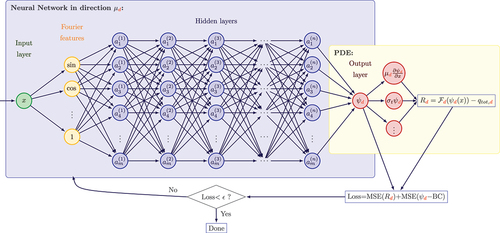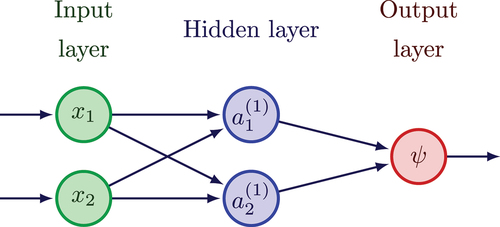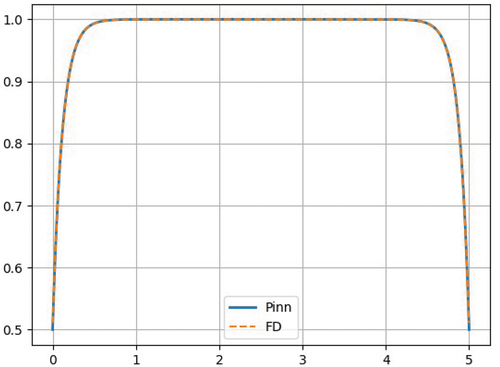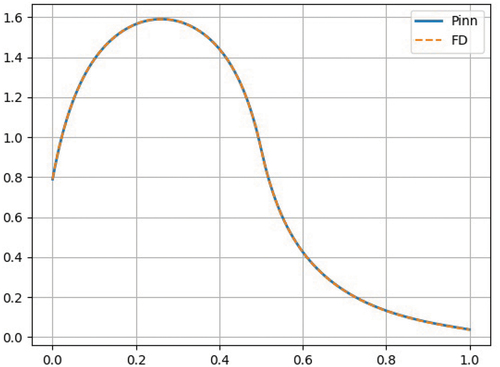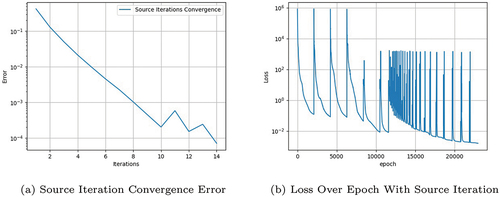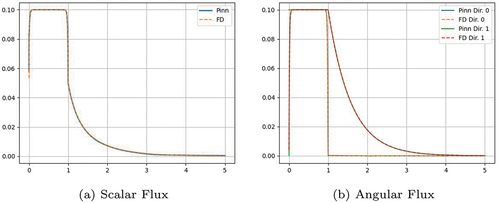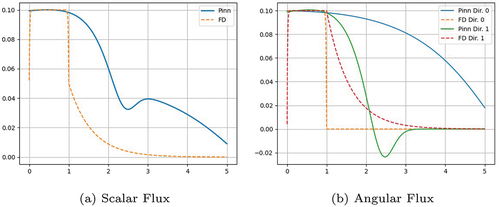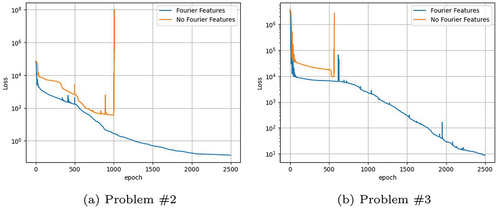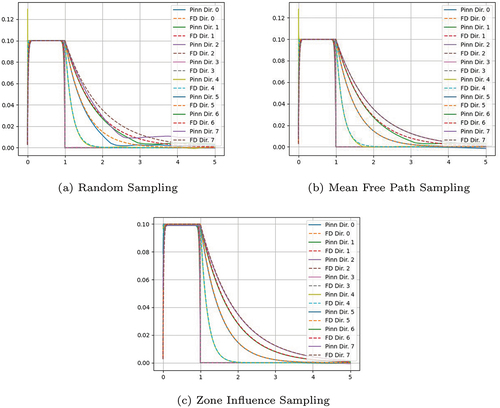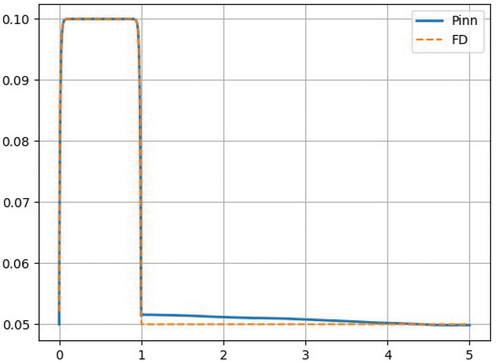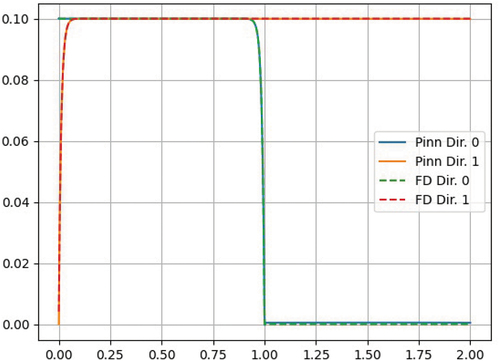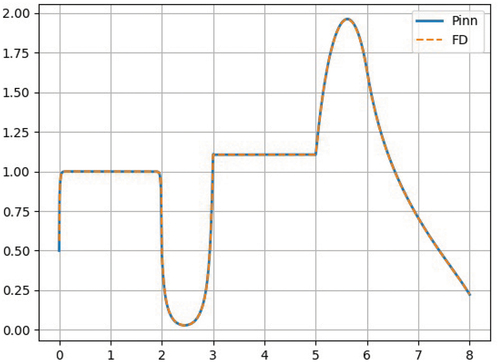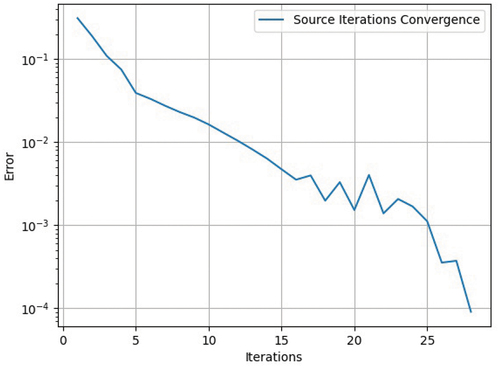Figures & data
Fig. 1. PiNN example: The neural network consists of two input neurons (in the case of a 2-D phase-space), followed by hidden layers, each with
neurons, and an output layer for the scalar variable, solution of the PDE
. The residual of the PDE at sampled points in the phase-space volume is built, as well as the boundary residual. Both residuals are then in the definition of a loss function whose minimization process trains the parameters of the neural network.
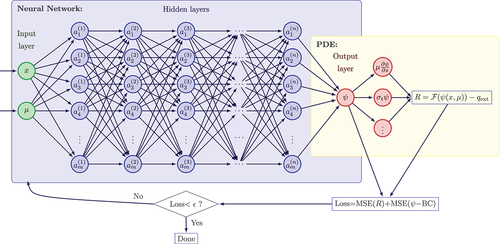
TABLE I Problem 1 Definition
TABLE II Problem 2 Definition
TABLE III Problem 3 Definition
TABLE IV Problem 4 Definition
TABLE V Problem 4’ Definition
TABLE VI Reed’s Problem Definition (Problem 5)

